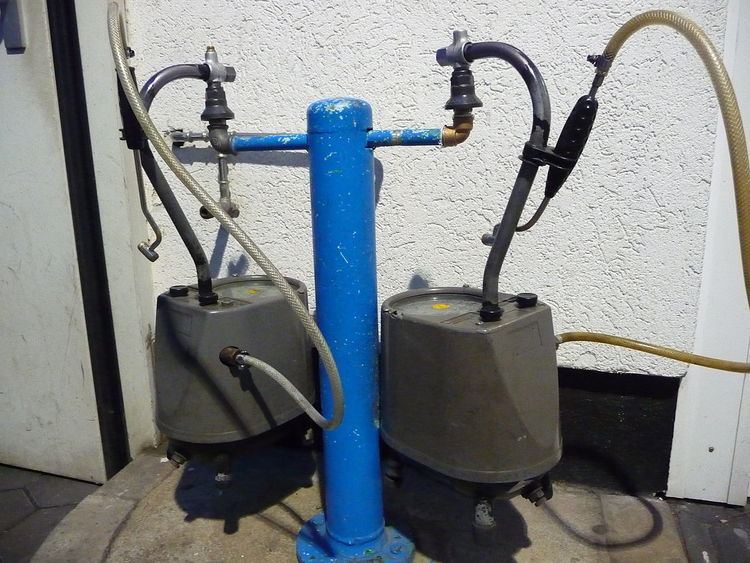 | ||
Cold inflation pressure is the inflation pressure of tires before the car is driven and the tires warmed up. Recommended cold inflation pressure is displayed on the owner's manual and on the placard (or sticker) attached to the vehicle door edge, pillar, glovebox door or fuel filler flap. Drivers are encouraged to make sure their tires are adequately inflated, as suboptimal tire pressure can greatly reduce fuel economy, increase emissions, increased wear on the edges of the tire surface, and can lead to premature failure of the tire. Excessive pressure, on the other hand, may lead to impact-breaks, decrease braking performance, and cause uneven wear (i.e. greater wear on the center part of the tire surface).
Tire pressure is commonly measured in psi in the imperial and US customary systems, bar, which is deprecated but accepted for use with SI or the kilopascal (kPa), which is an SI unit.
Ambient temperature affects the cold tire pressure. Absolute cold tire pressure (gauge pressure plus atmospheric pressure) varies directly with the absolute temperature, measured in kelvins.
From physics, the ideal gas law states that PV=nRT where P is absolute pressure, T is absolute temperature (Kelvin), V is the volume (assumed to be relatively constant in the case of a tire), and nR is constant for a given number of molecules of gas. To understand this, assume the tire was filled when it was 300 kelvin (80 degrees Fahrenheit). If the temperature varies 10%, i.e. by 30 kelvin (also 30 Celsius degrees or 54 Fahrenheit degrees), the pressure varies 10%. So if the tire was filled at 80F to 32 psi (or 47 psi absolute when we add atmospheric pressure), the change would be 4.7 psi for this 30 Celsius degree change, or .16 psi per Celsius degree or .1 psi per Fahrenheit degree or 1 psi for every 10 Fahrenheit degrees. Using SI units, that would be 1.1 kPa per kelvin.
Hence, for a tire filled to 32 psi, the approximation usually made is that within the range of normal atmospheric temperatures and pressures: Tire pressure increases 1 psi for each 10 Fahrenheit degree increase in temperature, or conversely decreases 1 psi for each 10 Fahrenheit degree decrease in temperature and in SI units, tire pressure increases 1.1 kPa for each 1 Celsius degree increase in temperature, or conversely decreases 1.1 kPa for each 1 Celsius degree decrease in temperature. For tires that need inflation greater than 32psi it might be easier to use a Rule of Thumb of 2% pressure change for a change of 10 degrees Fahrenheit. From the table below, one can see that these are only approximations.
Variation of Tire Pressure with Temperature in Fahrenheit and Celsius *
* Assuming atmospheric pressure is 14.696 psi or 101.3 kPA. This disclaimer needs to discuss how much water content is in this air. I assume this table is for typical air at a service station or garage with a certain assumed water content. Many sources say that increased water content makes the pressure vary more. Many sources say that one nitrogen benefit is removing the water and not just the air, and then the pressure variations would be less. I cannot find references for how much less. It would be good to have a table for air as above stating the % water content, and another table with 93% Nitrogen, with a very low water content in the remainder of the air. It would be good to see the differences here for sake of comparison. Shops that give nitrogen for free with tire services seem to overstate the benefits of nitrogen, is in this respect. https://www.edmunds.com/car-care/should-you-fill-your-cars-tires-with-nitrogen.html
